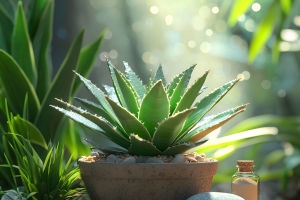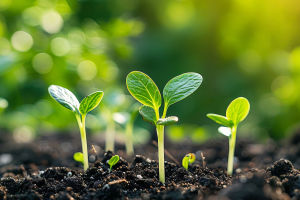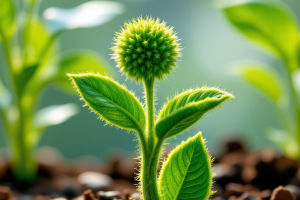Have you ever wanted to bring a bit of nature into your home, but felt unsure where to start?
Whether you're a complete beginner or just looking for low-maintenance greenery, this guide will walk you through the best indoor plants for new plant parents and teach you how to water them properly. Let's grow together!
Why Choose Indoor Plants?
Indoor plants do more than just beautify a space—they improve air quality, boost mood, reduce stress, and even support better focus and productivity. For beginners, choosing the right plants is key to building confidence and success. With just a bit of care and the right watering habits, your indoor plants can thrive for years.
Top 7 Indoor Plants for Beginners
If you're new to plant care, start with species that are forgiving, adaptable, and require minimal attention.
1. Snake Plant (Sansevieria): Known as one of the toughest plants, it survives low light, irregular watering, and dry air.
2. Pothos (Epipremnum aureum): This trailing plant is extremely easy to grow and adapts to a variety of indoor conditions.
3. Spider Plant (Chlorophytum comosum): A fast-growing plant that thrives in bright, indirect light and even helps purify air.
4. ZZ Plant (Zamioculcas zamiifolia): A slow-growing plant with glossy leaves that tolerates low light and infrequent watering.
5. Peace Lily (Spathiphyllum): Adds elegance with white flowers and thrives in medium light. It also shows visible signs when it needs water.
6. Aloe Vera: A succulent that's great for sunny windowsills. It needs very little water and has natural healing benefits.
7. Evergreen (Aglaonema): Attractive leaves and low light tolerance make this plant a popular choice for shaded corners.
These plants are not only low maintenance but also very forgiving if you occasionally forget to water or overwater.
Understanding Your Indoor Environment
Before choosing or placing plants in your home, consider three major indoor conditions:
• Light: South-facing windows offer the brightest light. East and west windows are moderate, and north-facing windows get the least. Use sheer curtains if the sunlight is too strong.
• Humidity: Bathrooms and kitchens usually have higher humidity, making them great for tropical plants. Dry areas may need misting or a humidifier.
• Temperature: Most indoor plants thrive between 60–75°F (15–24°C). Avoid placing them near heaters, air conditioners, or drafty windows.
Matching plants with the right environment will reduce stress for both you and the plant.
How Often Should You Water Indoor Plants?
This is the number one question among beginners. And the answer is: it depends! Different plants have different water needs. However, there are some general rules:
• Don't water on a schedule. Check your plant and soil instead.
• Use the finger test: Stick your finger 1 inch into the soil. If it's dry, it's time to water.
• Check the plant type: Succulents need watering every 10–14 days, while tropical plants may need water every few days.
• Seasonal changes: Plants need more water in summer and less in winter when growth slows.
Overwatering is the most common cause of plant death. Make sure pots have drainage holes and empty the saucer underneath after watering.
Signs of Overwatering vs. Underwatering
Knowing the signs of watering mistakes helps you correct course before damage is done.
Overwatering Signs:
• Yellowing leaves
• Soft or mushy stems
• Moldy soil surface
• Root rot smell (sour or musty)
Underwatering Signs:
• Dry, curling leaves
• Drooping stems
• Soil pulling away from the pot
• Crispy leaf tips
If in doubt, underwater slightly rather than overwater. Most plants can recover from dryness more easily than soggy roots.
Smart Watering Techniques
Improving your watering habits doesn't require fancy tools—just a bit of observation and consistency.
• Use room-temperature water: Cold water can shock roots.
• Water thoroughly: Let water drain from the bottom of the pot to ensure deep root hydration.
• Avoid misting as a main source: Misting only affects the surface. It's useful for humidity but doesn't hydrate the roots.
• Use self-watering pots or watering globes: These help maintain consistent moisture levels if you're busy or traveling.
If you're unsure how much to water, start with less and increase based on how your plant responds.
Best Water for Houseplants
Tap water is usually fine, but some plants are sensitive to chemicals like chlorine and fluoride. Here are some safer options:
• Distilled or filtered water for sensitive plants like spider plants or peace lilies
• Rainwater collected safely can be very beneficial
• Let tap water sit overnight to allow chlorine to evaporate
Plants like calatheas or ferns can suffer from brown tips due to harsh water. If you notice this, switch to filtered water and observe any improvements.
Tools That Help with Watering
Consider using a few affordable tools to simplify your plant care routine:
• Moisture meters to accurately detect soil dampness
• Watering cans with narrow spouts for precision
• Humidity trays to increase air moisture without misting
• Plant apps that remind you when to check soil or water based on plant type
These tools can reduce guesswork and help you build good habits.
Final Thoughts: Let Your Garden Grow
Caring for indoor plants is not about perfection—it's about building a routine and enjoying the process. The best part is that plants teach you patience, attentiveness, and mindfulness. As you gain confidence with beginner-friendly plants and smart watering, you'll naturally want to explore more varieties and styles.
So, what's stopping you from getting your first houseplant? Pick a small one, place it by the window, give it a name if you like, and let your home come alive with a little green joy. You'll be amazed how something so simple can make a big difference in your daily life.
Would you like a printable chart of watering intervals for beginner plants? I can create one to help you track your watering like a pro!


